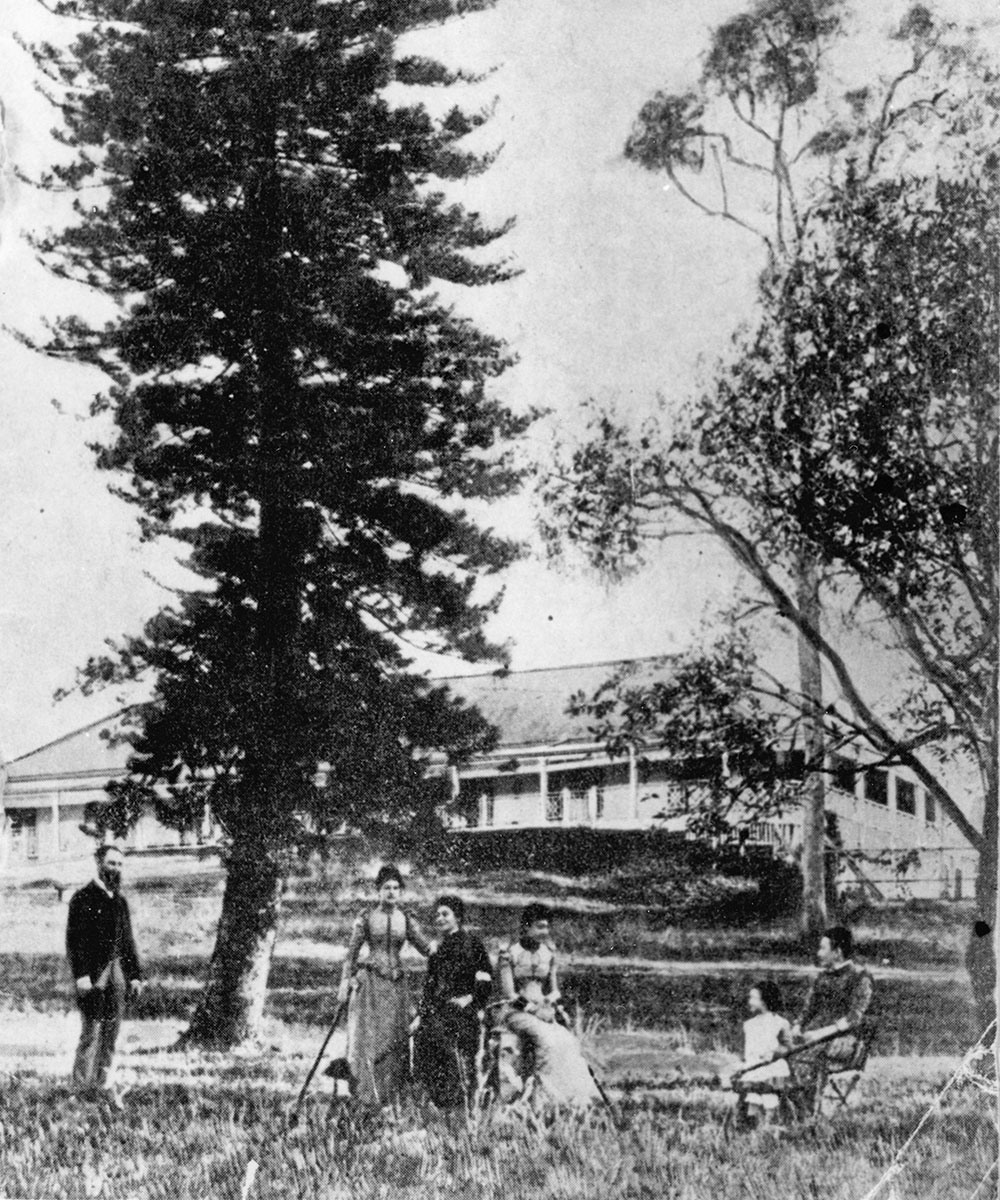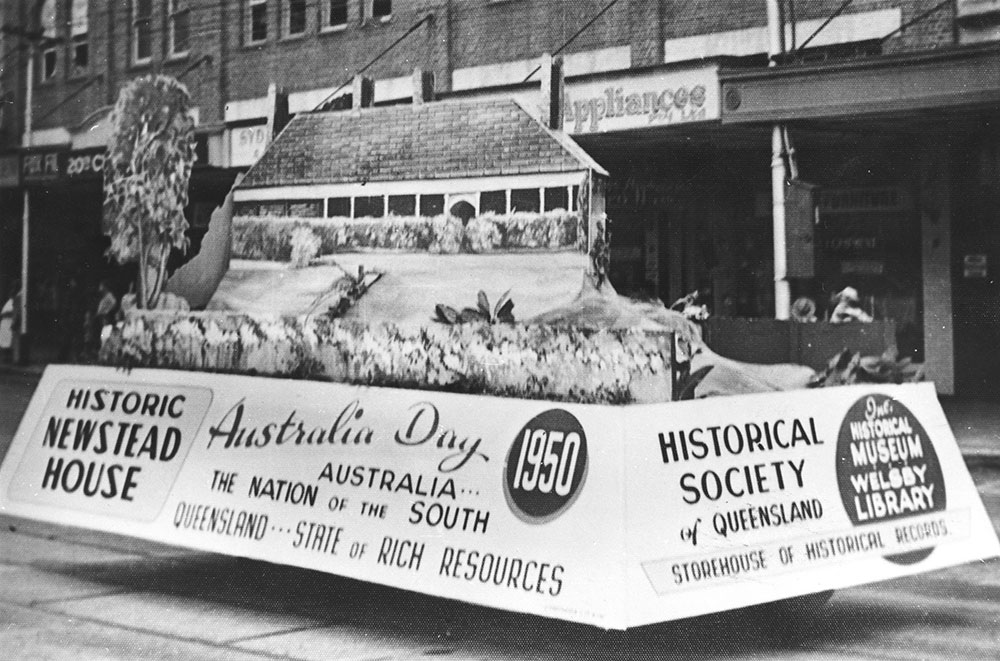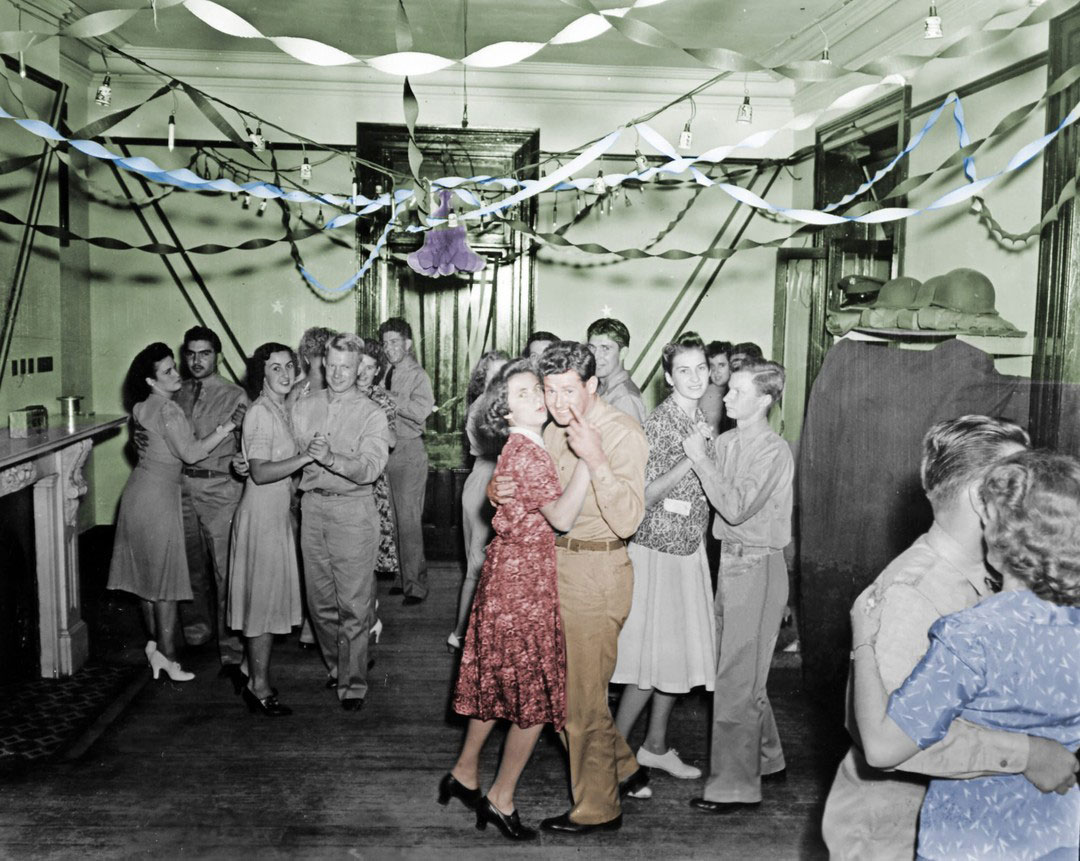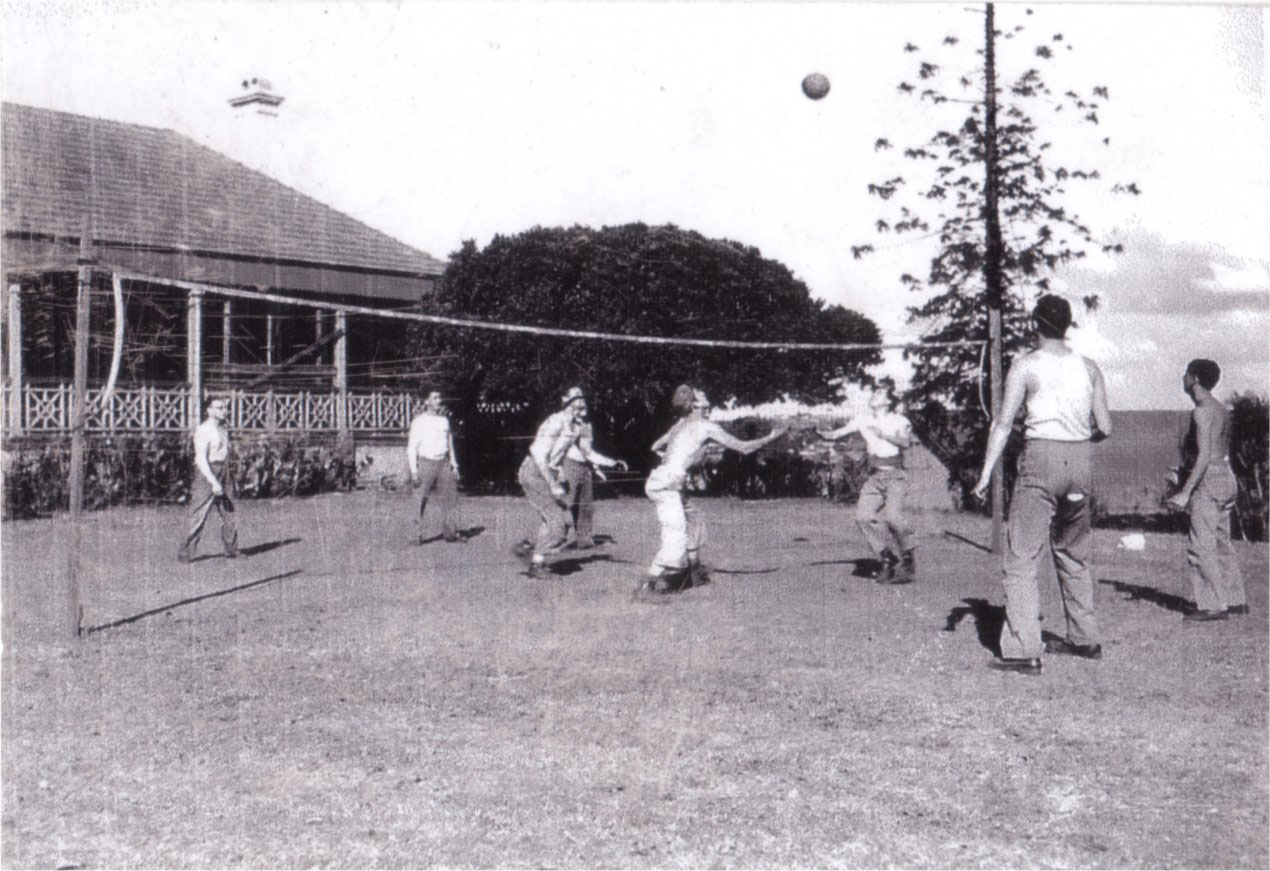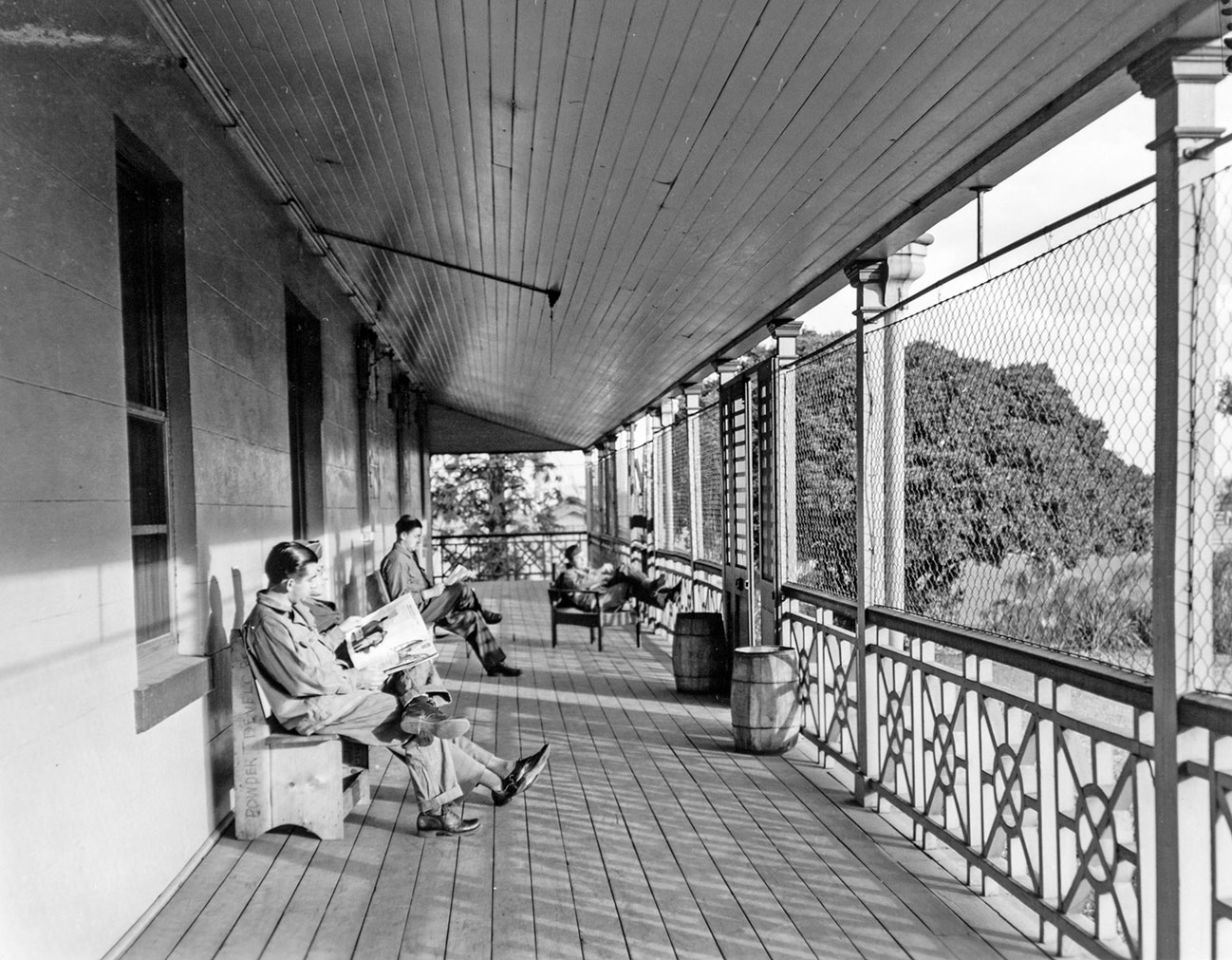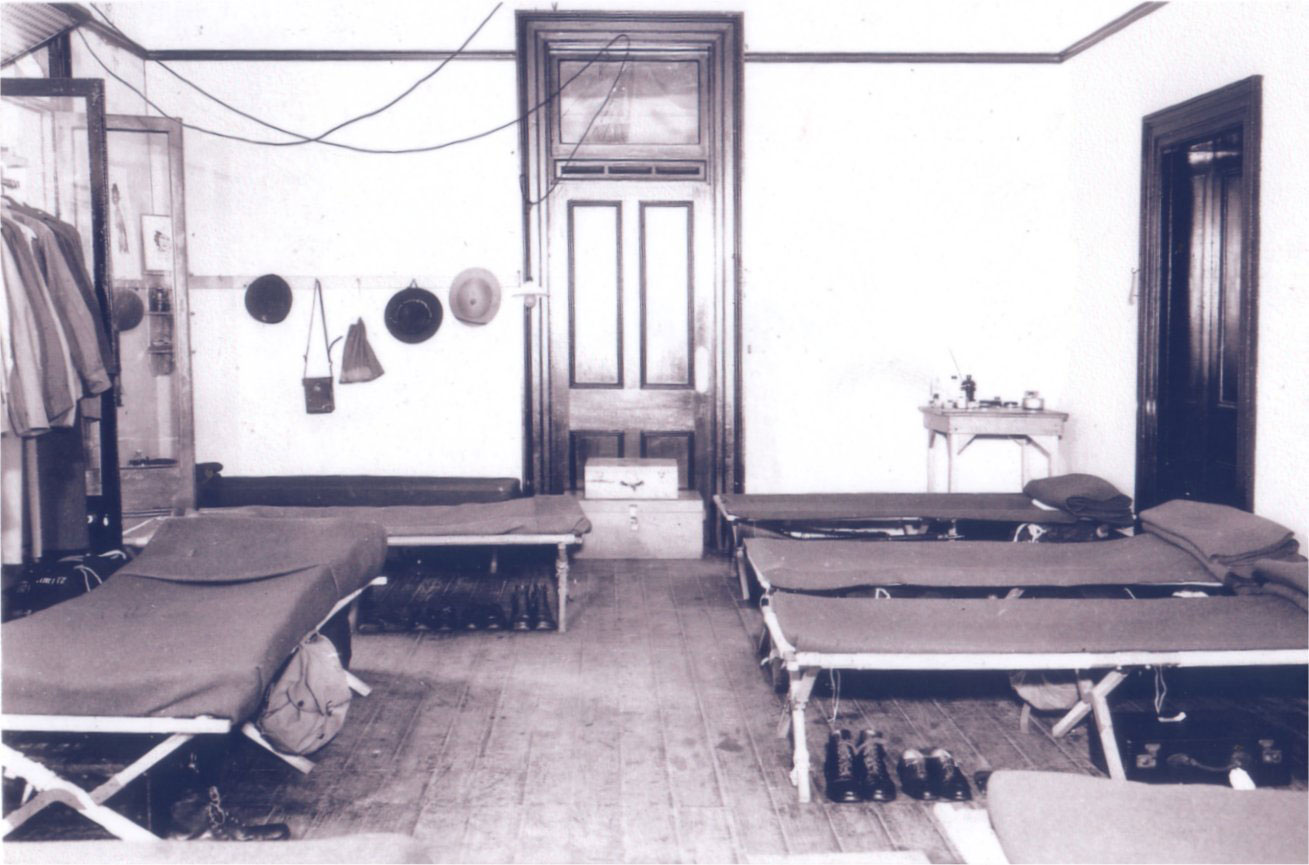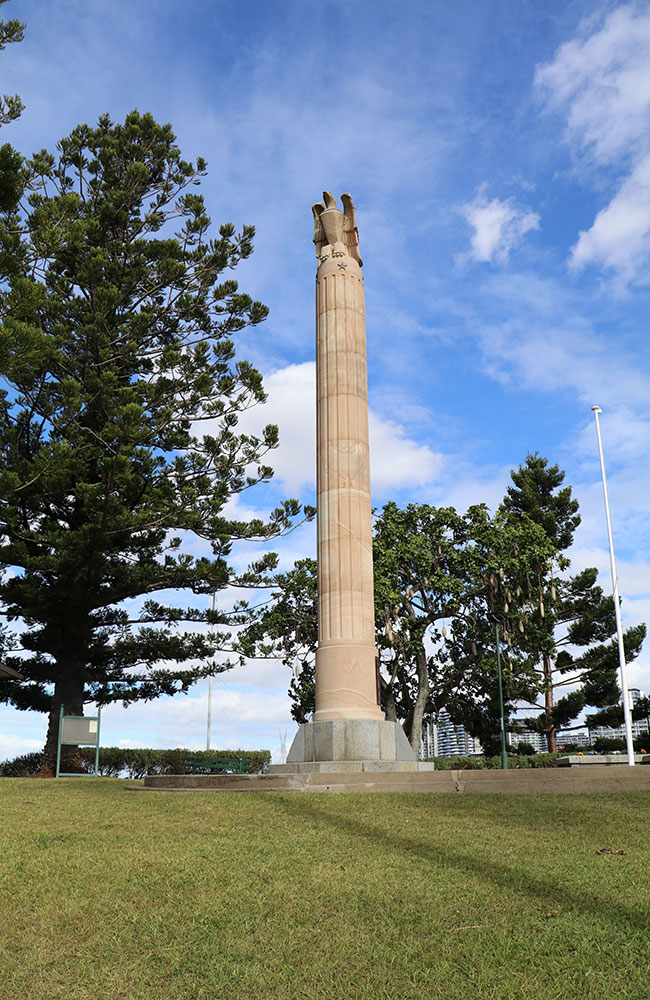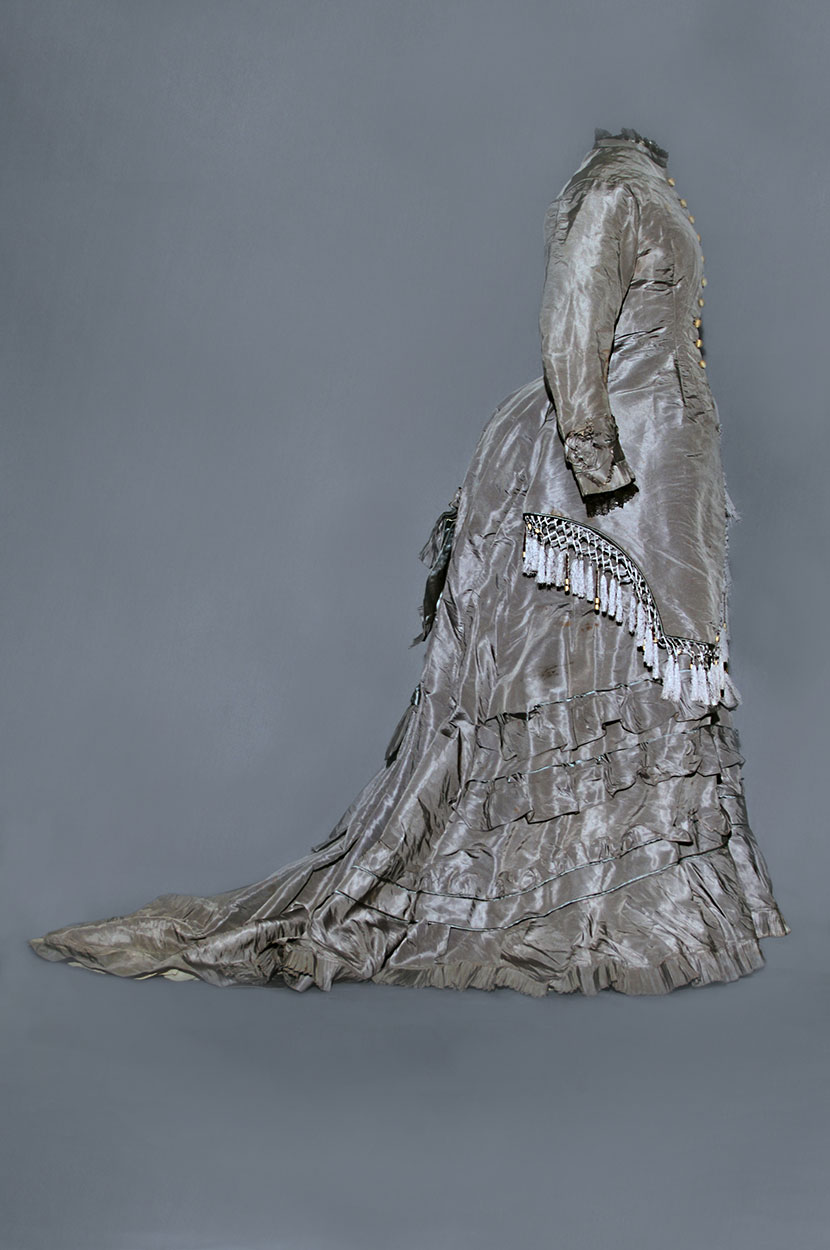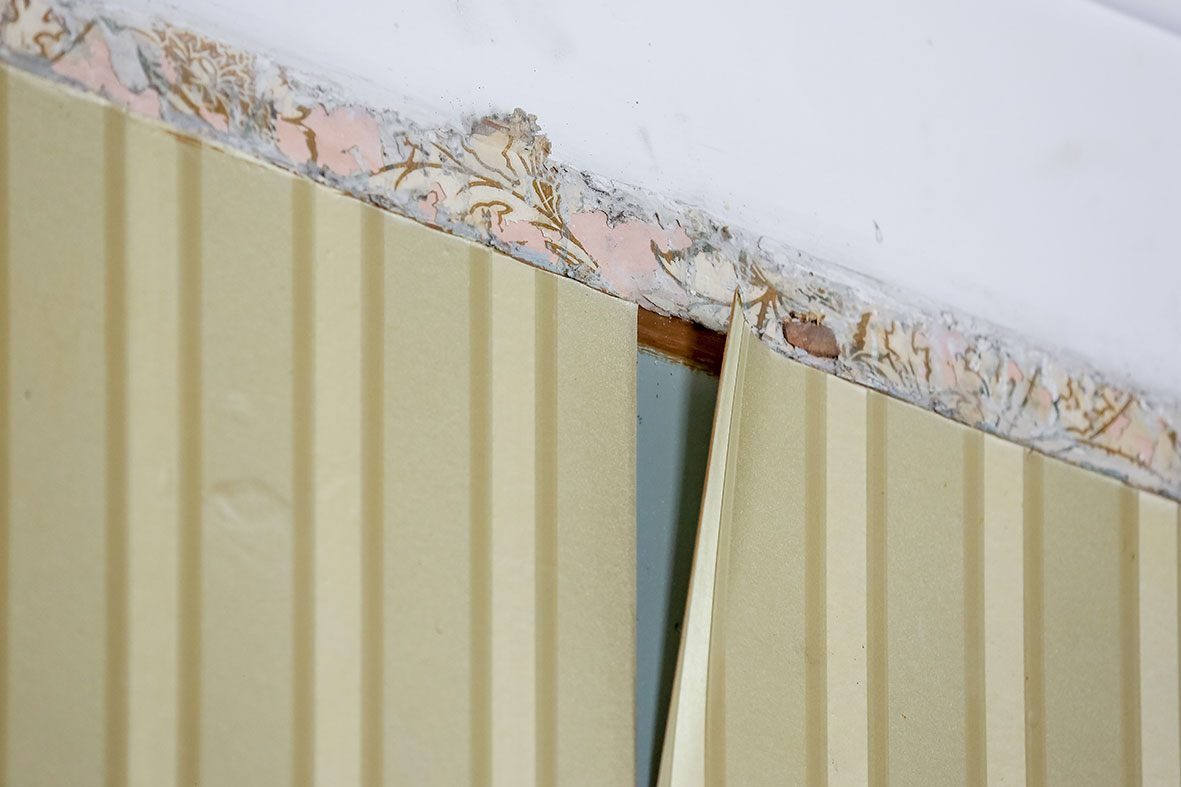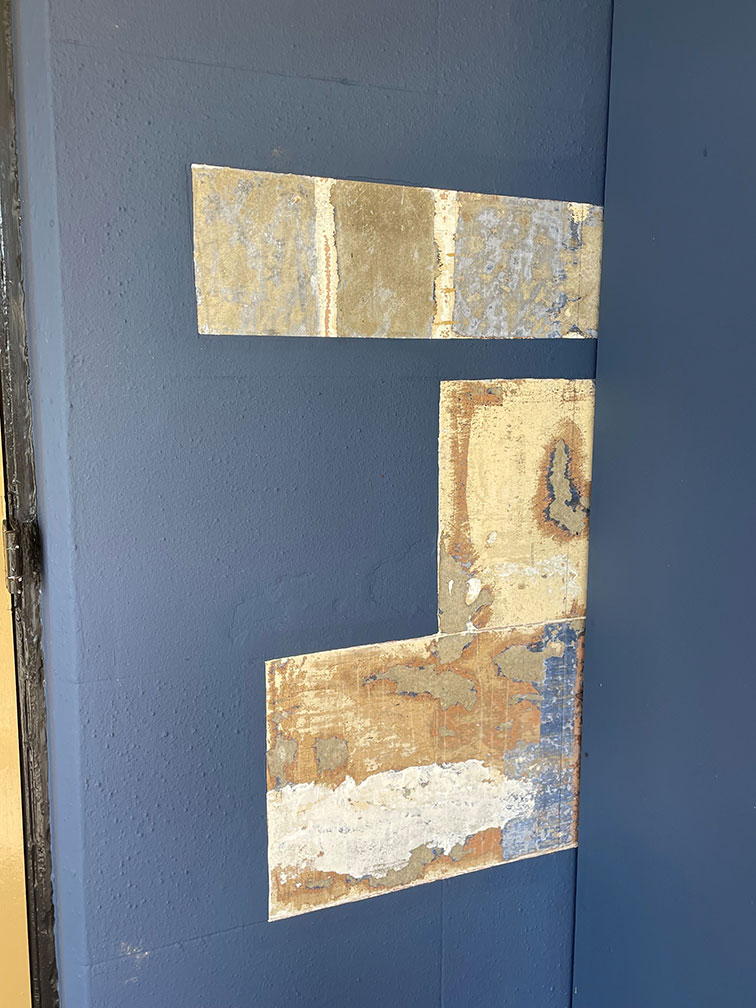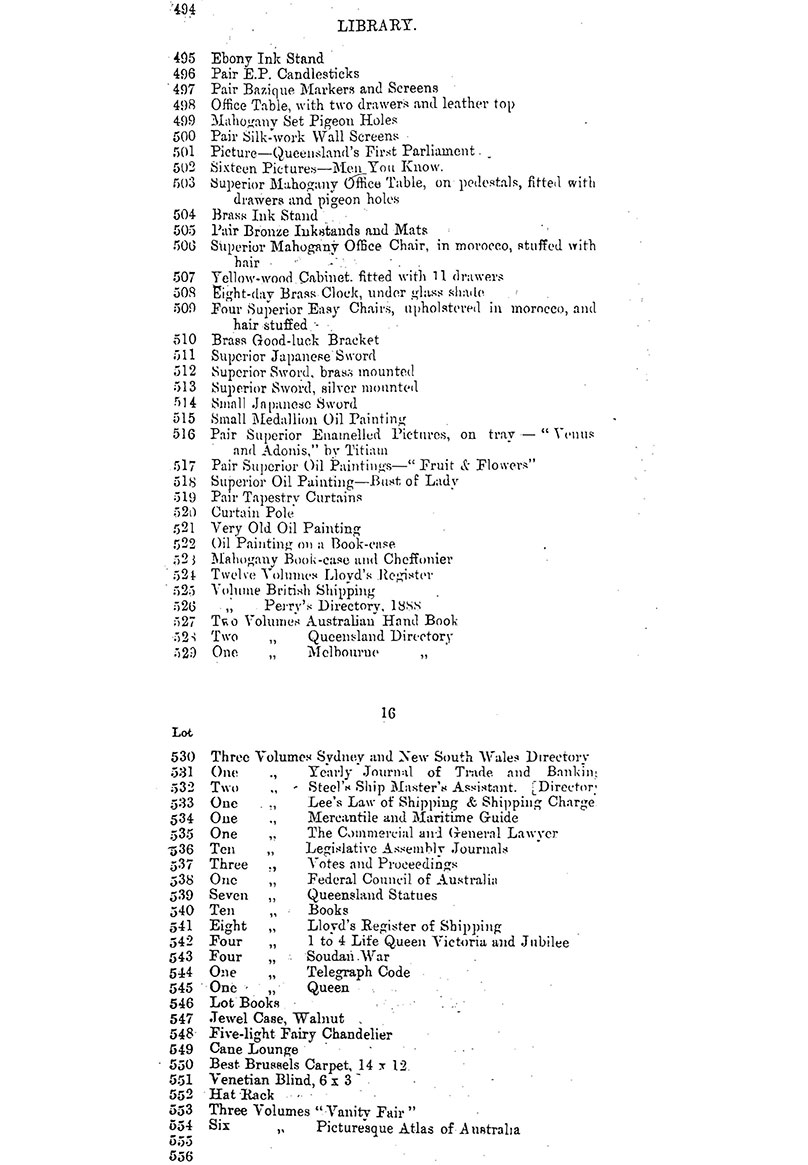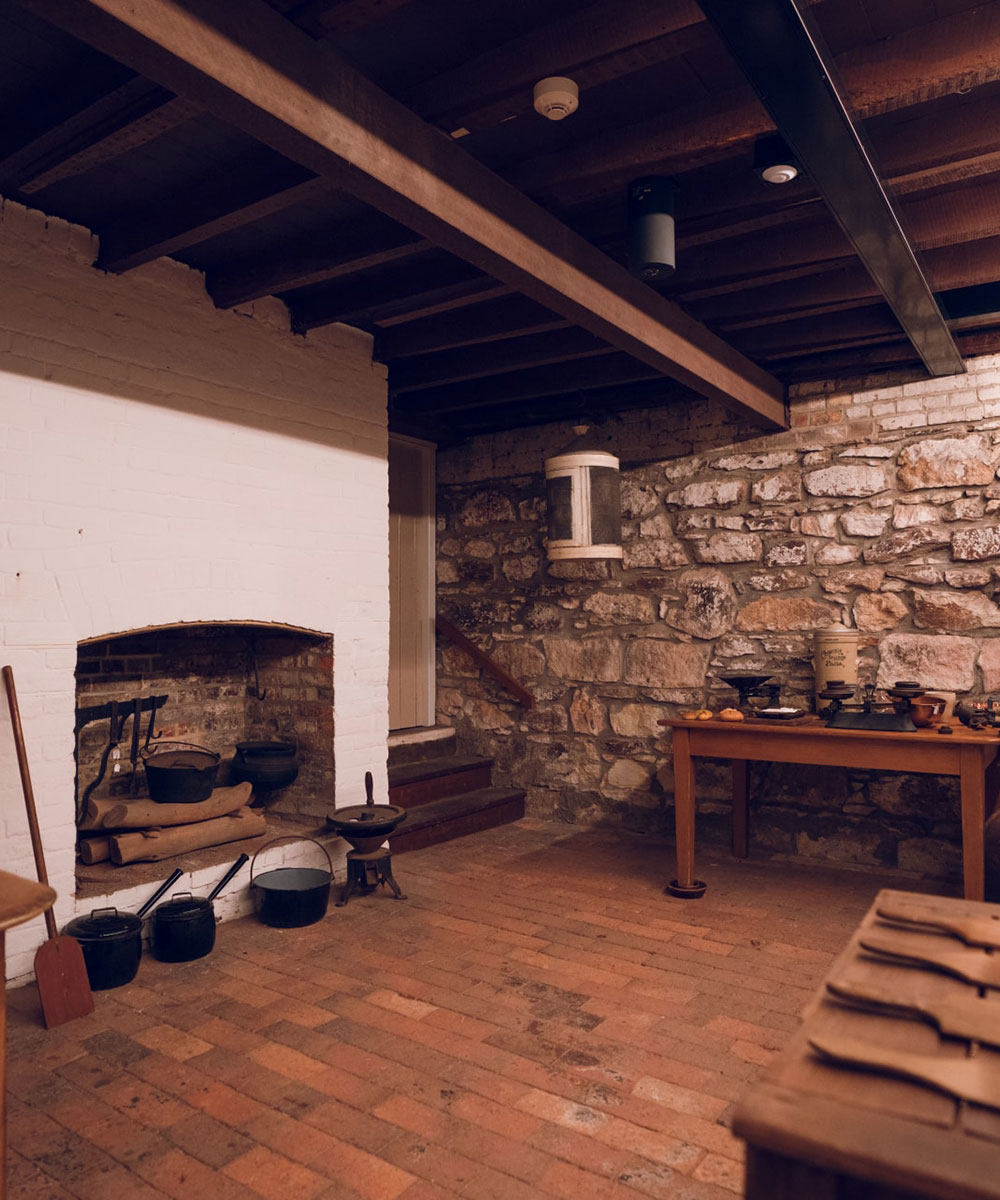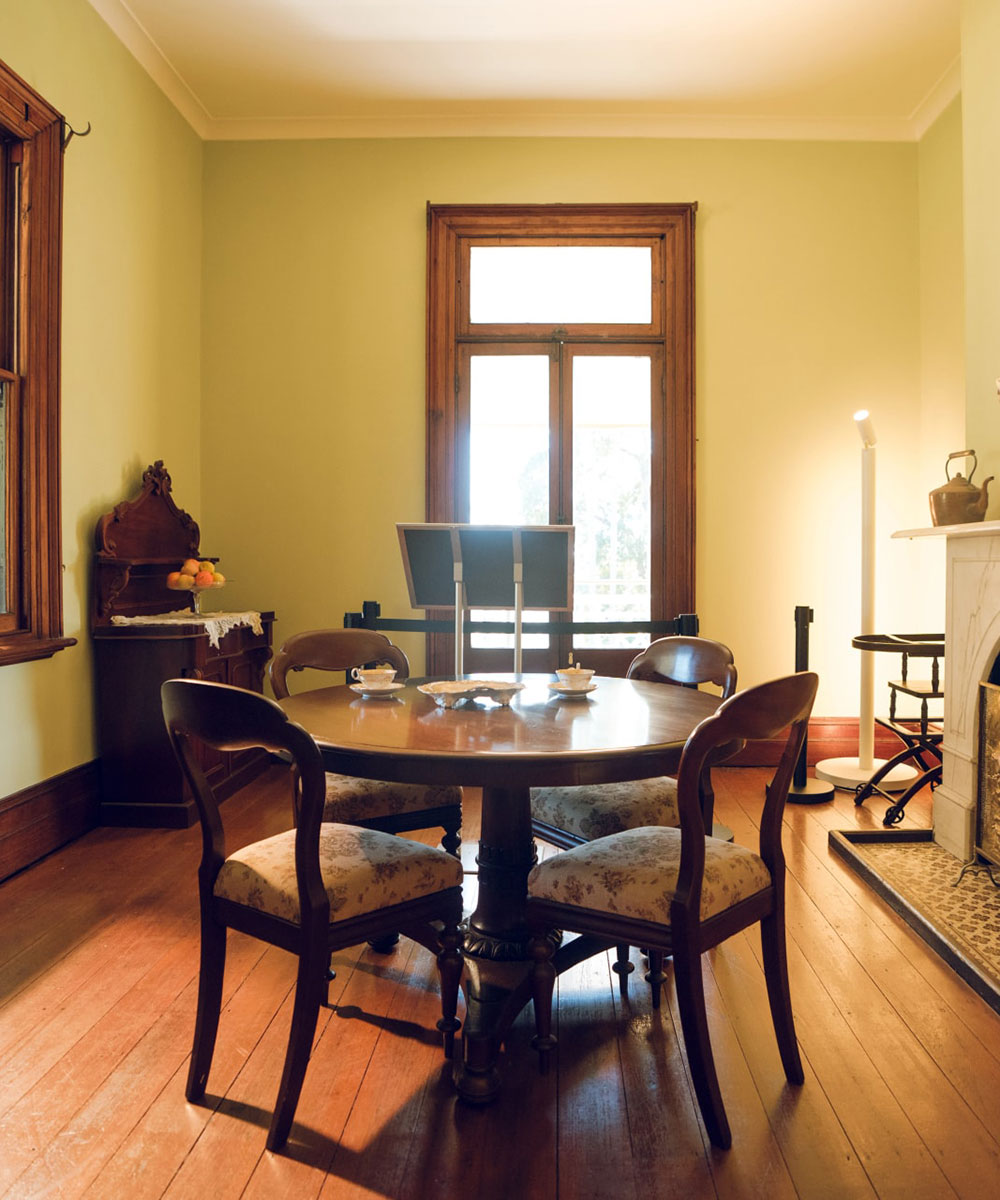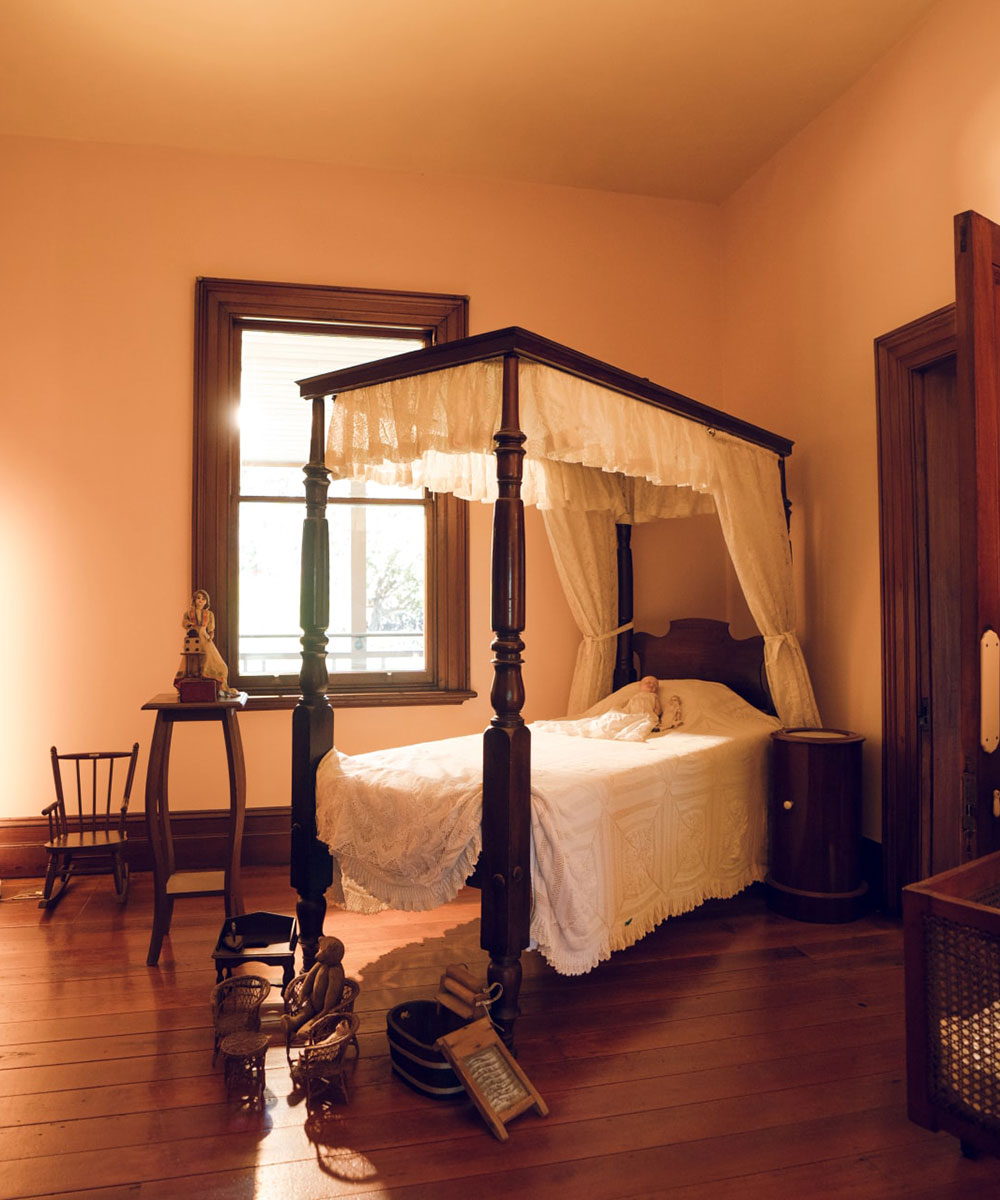The Library
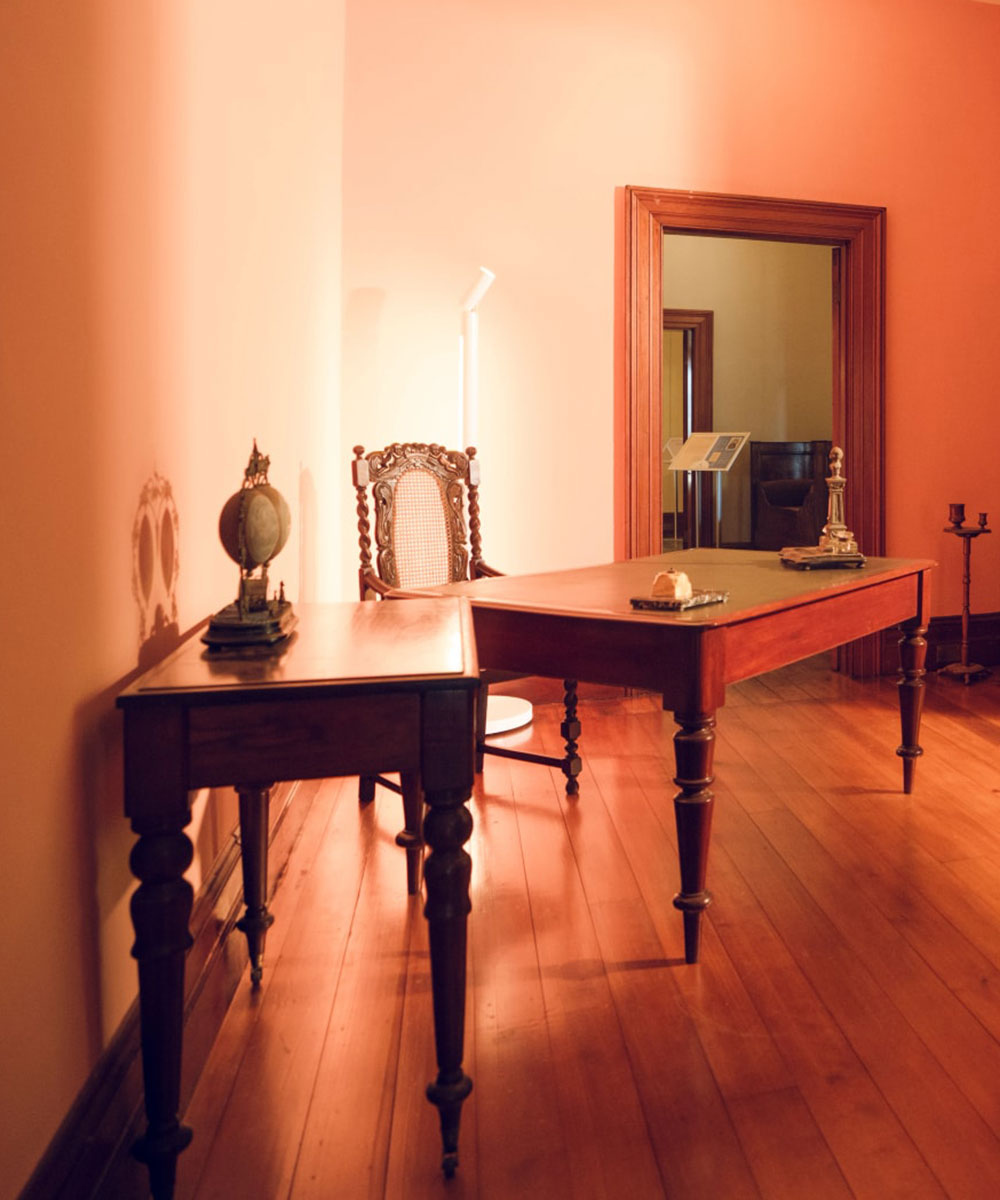
Welcome to the Library – a well-used and appreciated room. As you know, Newstead House didn’t always stay a “family home”, but many colourful characters resided here before it was bought by Council. So, what happened after the Harrises moved on in 1890? Many owners and tenants came and went, including botanists, clairvoyants, the Pearl King, and the founder of the Brisbane Synagogue.
The house after the Harrises
A series of curious characters moved into the house following the Harrises’ departure, though most stays were short-lived. Between 1890 – 1894, the Flegeltaub family moved in. Polish-born Lewis was a jeweller and founder of the Brisbane Synagogue. Shortly after, the ‘Pearl King’ James Clark took up residence, an entrepreneur who had founded an oyster farm at Moreton Bay and owned a fleet of pearling vessels.
Between 1906 –1909, Newstead House was home to George Howard Robbins, a psycho-therapeutic and consulting herbalist, and his mother, Mary Ann, who ran a Botanic Institute from the veranda. A Mr Stephenson, a practising clairvoyant, also had rooms in the house.
The mysticism continued when Caroline Heaslop purchased Newstead House in 1908. She and her husband, Thomas, only stayed a year, as Caroline became convinced the place was haunted. The flickering lights she found so ghostly were later discovered to be the result of train vibrations at nearby Mayne Junction. Although she moved out, Caroline retained ownership of Newstead House, and in 1915 began negotiating with the City of Brisbane who were interested in purchasing it. The city bought the property in 1918 for £9,400. The Superintendent of Parks, Harry Moore, moved into the house and began designing Newstead Park, which opened in 1921.
In 1928, the substation in the grounds was built to give power to the Brisbane tram network.
The Royal Historical Society of Queensland was given rooms at Newstead House in 1932, and in 1941 the house first opened as a museum. The Queensland Women’s Historical Association also took up residence in 1950.
After hosting the American army during the Second World War and undergoing subsequent major works, the house was opened again to the public in 1971, and officially as a historic house museum in 1974.
Second World War
When American General Douglas MacArthur arrived in Brisbane in 1942, the city became the headquarters for the war in the South West Pacific. American troops flooded in and grand old houses around Brisbane’s suburbs became temporary barracks. Between 1943 – 45, Newstead House housed the Photographic Detachment of the 832nd Signal Service Company. Rooms were transformed into dormitories, and each mealtime trucks shunted the soldiers to a mess hall at Cloudland in Bowen Hills. A photographic laboratory was set up at nearby Cintra House.
Tradition has it that the Battle of the Coral Sea was plotted in this very library, but there is no evidence to support this idea. Newstead Park was equipped with searchlights and an anti-aircraft gun, staffed by the Australian 113th Light Anti-aircraft Regiment who camped in the park’s bandstand.
An Australian-American memorial was erected in Newstead Park in 1951 to acknowledge the role of US troops in Australia during the Second World War, the first of its kind to be constructed in Australia.
The collection
Items in the Newstead House collection are significant for a range of reasons. Some demonstrate craftmanship, such as the Australian cedar desk made by Ipswich cabinetmaker George Dowden which features his stamp from c1875. Today, furniture from this era that can be definitively attributed to local Queensland makers like this is rare.
The house’s first curator, David Gibson, began building the collection after his appointment in 1974, expanding on material collected by the Royal Historical Society of Queensland. Other purchases and donations have been facilitated by the Friends of Newstead. Much of the collection has been built on donations from the Brisbane community.
Items on display in the house have been selected from the collection because they represent the Harris era (c1862 – 1890). Because all the Harris’ household items were sold in the 1890 auction, the collection items are not original to the house.
Some pieces have come from further afield. The Hinckley collection of textiles contains more than 25 dresses, dress fabrics, waistcoats, and other textiles that belonged to a family in Staffordshire, England, between the 1700s and the 1930s. The family’s Australian descendent generously donated the collection to Newstead House in 1979. Like these textiles, much of the current collection requires significant ongoing care and restoration, so these items are not on display.
A 2022 inventory detailed 6,000 individual items in the Newstead House collection. While the collection previously had no guiding principles, there is now a collection policy to ensure items can be properly cared for. The policy outlines what should and should not be accepted, to ensure that Newstead House is the best place for such items. There is also a renewed focus on accurate record-keeping to ensure stories, owners, and donors can be properly remembered in the future.
The conservation story
Between 2021 and 2024, Newstead House underwent a major conservation project funded by the Queensland Government, with historical experts undertaking extensive physical investigations onsite. Their findings led to recommendations about how the house should be restored, with the guiding principle that it should be returned to the Harris era (c1862 – 1890).
As follows is a summary of the major restoration works undertaken that you will see as you explore the house:
- Roof tiles were replaced with Welsh slate shingles to match original roofing.
- Extensive drainage works were undertaken.
- Stone and brick conservation, including removal of paint, redress and retool of stones as well as repointing with lime-based mortar. Extraction of salts from original cottage brickwork.
- Timber repairs, including roof framing, floor framing, veranda flooring, veranda posts, balustrades, and screens.
- Window and door repairs.
- Repainting of house and annexe. The blue of the main residence was chosen after extensive research and testing and reflects one the colour schemes used by the Harris family.
- Interior wall treatment, with reproduction wallpaper based on original samples. Other rooms were repainted. Remnants of original wallpaper was found under picture rails throughout the house. These remnants were used to recreate the wallpaper pattern which was then screen printed.
- Internal flooring was refinished.
- Ceiling lights were removed to reflect the era and replaced with a museum quality floor lighting system.
Why is Newstead House blue?
To determine the most appropriate colour scheme for Newstead House, heritage experts from the Department of Environment, Science and Innovation conducted a detailed study to investigate what the early decorative finishes to the exterior of the building would have been during the Harris family’s period of occupation.
This research involved an exhaustive analysis of previous studies and reports on Newstead House, historical plans and newspaper articles, and historical photographs and images to identify tonal colours used on various elements of the house throughout history.
Heritage officers used scalpels and other paint removal techniques to painstakingly remove more than 60 scrapings from the painted elements of the house to create a timeline of the building’s paintwork. You can see some of these outside the breakfast room, on the verandah.
The colour study identified three Harris-era decorative schemes, the third of which comprised blue rendered walls with black joinery, gilded door mouldings, and stone coloured verandah elements.
Heritage officers chose the blue for this reason, and it was repainted as part of the conservation project between 2021 and 2024.
What was in this room?
Scroll through the 1890 auction catalogue below to find out what was in this room.
Explore
3 Adjacent Rooms
Click on a room to find out more
